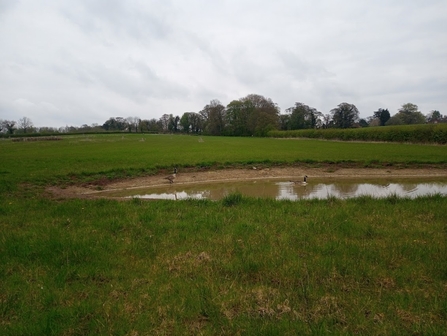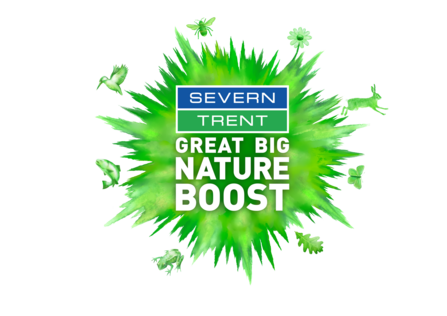Ponds
The Value of Ponds
Ponds can be a forgotten or neglected part of the farm. A huge variety of wildlife relies on ponds they can support a similar or greater aquatic diversity compared with other wetland habitats such as rivers. A large diversity of species need freshwater. They are an essential part of the local farm environment but also part of the landscape.

Pond being used by waterfowl.
Our main aim
The goal of the project is to increase resources for wildlife such as food and shelter and connecting those habitats up, creating wildlife corridors.
Carefully designed wildlife ponds rapidly become rich in species. We aim to create and improve existing ponds to ensure they have clean water, enough open water with light reaching the pond, lots of shallow marginal habitat, varied topography, native pond vegetation and plenty of terrestrial habitat around the pond.
Connectivity
Having a number of connected ponds on the farm is of great value for wildlife, providing additional habitat and facilitating species movement through the landscape. Several smaller ponds are a lot better for wildlife than one larger pond.
The habitat surrounding ponds provides key areas for feeding and shelter for amphibians. Rough grassland, log piles or stone piles close to ponds can be valuable features for a wide range of wildlife. Hedgerows and buffer strips can be important in enabling species to move between habitats, including other ponds, woodland, scrub and tussocky grassland to find areas to feed, migrate, take refuge and hibernate. If we are doing a pond creation and the site is suitable it is a great opportunity to add a hibernaculum which provides shelter for amphibians, some reptiles and even small mammals.
The benefits of ponds for people and wildlife
Ponds can also have flood benefit and are a carbon sink. Helping to mitigate against climate change.
Native plants such as marsh marigold and water crowfoot benefit from ponds. Aquatic invertebrates can thrive too, including dragonflies whose larvae are dependent on ponds and their plants. Beneficial pollinating insects such as bees will drink from ponds while many hoverflies and damselflies need water to complete their lifecycle.
Ponds are also central to amphibian ecology and so their creation is key to improving their conservation status. Ponds provide breeding habitat for common toad and common frog. Reptiles such as grass snakes are strongly associated with ponds too. Birds and mammals (including bats) rely on ponds for their drinking water and feeding from the insect life.
Funded by

